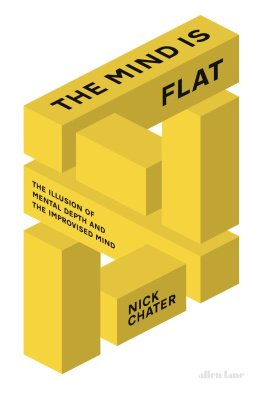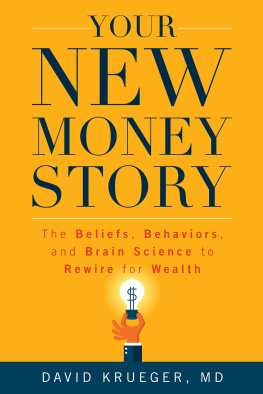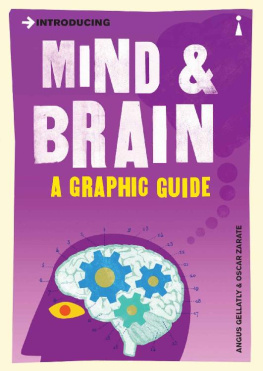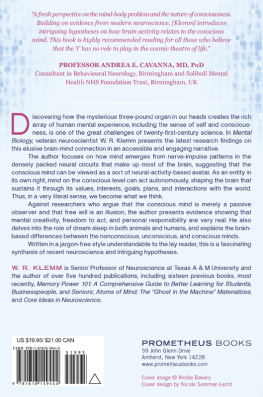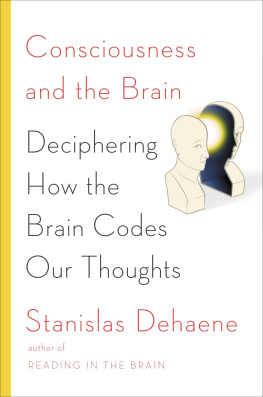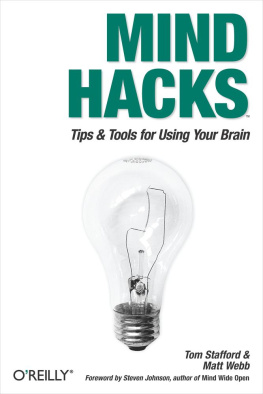The Mind Is Flat
NICK CHATER
The Mind Is Flat
The Remarkable Shallowness of the Improvising Brain

First published in the United States in 2018 by Yale University Press. First published in Great Britain in 2018 as The Mind Is Flat: The Illusion of Mental Depth and the Improvised Mind by Penguin Books Ltd, London.
Copyright Nick Chater, 2018. The moral right of the author has been asserted. All rights reserved. This book may not be reproduced, in whole or in part, including illustrations, in any form (beyond that copying permitted by Sections 107 and 108 of the U.S. Copyright Law and except by reviewers for the public press), without written permission from the publishers.
Yale University Press books may be purchased in quantity for educational, business, or promotional use. For information, please e-mail sales.press@yale.edu (U.S. office) or (U.K. office).
Typeset in 10.5/14 pt Sabon LT Std by Jouve (UK), Milton Keynes. Printed in the United States of America.
Library of Congress Control Number: 2018941452
ISBN 978-0-300-23872-3 (hardcover : alk. paper)
This paper meets the requirements of ANSI/NISO Z39.48-1992 (Permanence of Paper).
10 9 8 7 6 5 4 3 2 1
To my mother and father, Robert and Dorothy Chater, and to my wonderful wife and children, Louie, Maya and Caitlin Fooks, whose unfailing support and love has made this book possible.
Contents
PART ONE
The Illusion of Mental Depth
PART TWO
The Improvised Mind
Prologue: Literary Depth, Mental Shallows
when we claim to be just using our powers of inner observation, we are always actually engaging in a sort of impromptu theorizing and we are remarkably gullible theorizers, precisely because there is so little to observe and so much to pontificate about without fear of contradiction.
Daniel Dennett
At the climax of Anna Karenina, the heroine throws herself under a train as it moves out of a station on the edge of Moscow. But did she want to die? Various interpretations of this crucial moment in Tolstoys great masterpiece are possible. Had the ennui of Russian aristocratic life and the fear of losing her lover Vronsky become so intolerable that death seemed the only escape? Or was her final act mere capriciousness, a theatrical gesture of despair, not seriously imagined even moments before the opportunity arose?
We ask such questions. But can they possibly have answers? If Tolstoy says that Anna has dark hair, then Anna has dark hair. But if Tolstoy doesnt tell us why Anna jumped to her death, then Annas motives are surely a void. We can attempt to fill this void with our own interpretations and we can debate their plausibility. But there is no hidden truth about what Anna really wanted, because, of course, Anna is a fictional character.
Suppose instead that Anna were a historical figure and Tolstoys masterpiece a journalistic reconstruction of real events. Now the question of Annas motivation becomes a matter of history, rather than literary interpretation. Yet our method of inquiry remains the same: the very same text would now be viewed as providing (perhaps unreliable) clues about the mental state of a real person, not a fictional character. Lawyers, journalists and historians, rather than critics and literary scholars, might put forward and debate competing interpretations.
Now imagine that we ask Anna herself. Suppose that Tolstoys novel was indeed an account of real events, but the great steam engine slammed on its brakes just in time. Anna, apparently mortally injured, is conveyed anonymously to a Moscow hospital. Against the odds, she pulls through and chooses to disappear to escape her past. We catch up with Anna convalescing in a Swiss sanatorium. As likely as not, Anna will be as unsure as anyone else about her true motivations. After all, she too has to engage in a process of interpretation: considering her memories (rather than Tolstoys manuscript), she attempts to piece together an account of her behaviour. Even if Anna does venture a definitive account of her actions, we may be sceptical that her own interpretation is any more compelling than the interpretations of others. To be sure, she may have data unavailable to an outsider she may, for example, remember the despairing words Vronsky has left me forever running through her mind as she approached the edge of the fateful platform. However, any such advantage may be more than outweighed by the distorting lens of self-perception. Our interpretations of our own actions seem, among other things, to assign to ourselves greater wisdom and nobility than might be evident to the dispassionate observer. Autobiography always deserves a measure of scepticism.
Might we get closer to Annas true motivations if we asked her not in hindsight, but at the time? Suppose a journalist, employed by a scandal-hungry Moscow paper, is following Annas every move, scenting a story. He leaps to save Anna from falling to her death, only to brandish pen and notepad, with the words, Now, Ms Karenina, tell me a little about why you decided to launch yourself into oblivion. This strategy seems unlikely to succeed, to put it mildly. And a discreet query of, Ms Karenina, I perceive you to be about to leap to your death. Perhaps you could spare a couple of moments to answer this short questionnaire? seems equally doomed to fail.
There are two opposing conclusions that one might draw from this vignette. The first possible moral is that our minds have dark and unfathomable hidden depths. From this viewpoint, we cannot expect people reliably to be able to look within themselves and compile a complete and true account of their beliefs and motives. Explanations of behaviour, whether from observers or participants, and whether before, during or after the event, are partial and unreliable at best.
From the hidden depths standpoint, then, uncovering the true motivations for human behaviour needs more than the blunderbuss of asking people directly. It requires delicacy and sophistication. We need somehow to dive deep into the inner workings of the mind, and to measure directly the hidden beliefs, desires, motives, fears, suspicions and hopes governing our actions, forces of which we may ourselves be only dimly aware. Psychologists, psychiatrists and neuroscientists have long debated how best to plumb the deep waters of human motivation. Word associations, the interpretation of dreams, hours of intensive psychotherapy, behavioural experiments, physiological recordings and brain imaging have all been popular options over the last century or so. Whatever the method, the objective is clear: to discover the feelings, motives and beliefs that lurk below the mental surface of conscious awareness to chart, in short, our hidden depths. Yet the contents of our hidden depths seem to remain perpetually elusive. Freudian psychoanalysts can speculate about our hidden fears and desires; psychologists and neuroscientists can attempt to draw subtle and highly indirect conclusions from actions, heart-rate, skin conductance, pupil dilation and the rate of blood flow in the brain. But no hidden beliefs, desires, hopes or fears are ever actually observed. Perhaps our hidden depths are an inner space that is as, or more, mysterious than the depths of outer space; and to penetrate it we will need more sophisticated instruments and methods of analysis. From this viewpoint, our failure so far to reveal the hidden depths of the human mind should drive us to even greater efforts.
In this book, I will argue for precisely the opposite viewpoint: that the project of charting our hidden depths is not merely technically difficult, but fundamentally misconceived; the very idea that our minds contain hidden depths is utterly wrong. Our reflections on Anna Kareninas fateful act should point us, instead, to a radically different moral: that the interpretation of the motives of real people is no different from the interpretations of fictional characters. And fictional characters cant, of course, have an inner life, because they have no life at all: there is no more a fact about whether the fictional Anna has a subconscious fear of dogs, doubts about the stability of the Tsarist regime, or prefers Bach to Mozart, than there is a fact about whether she was born on a Tuesday. There is no hidden truth about fictional characters, nothing beneath the surface of the words on the page.
Next page

